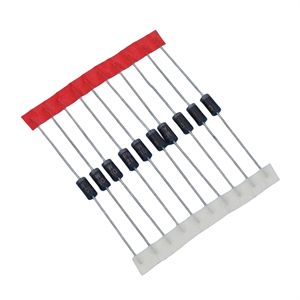Date:2024-09-25 Categories:Product knowledge Hits:460 From: Guangdong Youfeng Microelectronics Co., Ltd(YFW)
TVS diodes are widely used in power circuits due to their small size and fast response time. They absorb surge currents and voltages at a rate of microseconds to protect electrical equipment.
The working principle of TVS and voltage regulator diode is the same, but there are certain differences in their structures. The major difference is that the PN junction area of the voltage regulator diode is relatively small, and the reverse current it can withstand is also very small.
The maximum reverse current of low-power voltage regulators (power between 0.5 and 1W) is tens of mA to hundreds of mA; The PN junction area of TVS transient suppression diodes is relatively large, and they can dissipate a large amount of power, allowing for a maximum reverse current of several amps to tens of amps. So it can absorb the instantaneous high current caused by the instantaneous high voltage pulse. The power of a typical voltage regulator diode is 0.5-3W, while the power of a transient diode can reach 300W to 1500W, and some used for high voltage can reach over 10kW.
ESD-TVS is a transient diode with a reverse breakdown voltage of 6.4-7.3V and a dissipated power of 500W, which can withstand a maximum pulse current Ipp of 52-54A.
A transient diode is used as a protective circuit, which is connected in parallel to the protective circuit. It does not require a current limiting resistor R. If the working voltage of the protected circuit is+4V, a diode with a breakdown voltage of 5.5-6V can be selected. During normal operation, the transient diode does not work and is quite open circuit; When there is an instantaneous high voltage pulse in the working voltage, the transient suppression diode is clamped at around 8V under the action of the high voltage pulse. At this time, 8V voltage is safe for circuits operating at 4V. After the high-voltage pulse passes, the transient diode becomes quite open again.

Previous: Classification, Structure, and Principle of MOSFET
Next: How to distinguish between PNP and NPN in transistor application circuits?